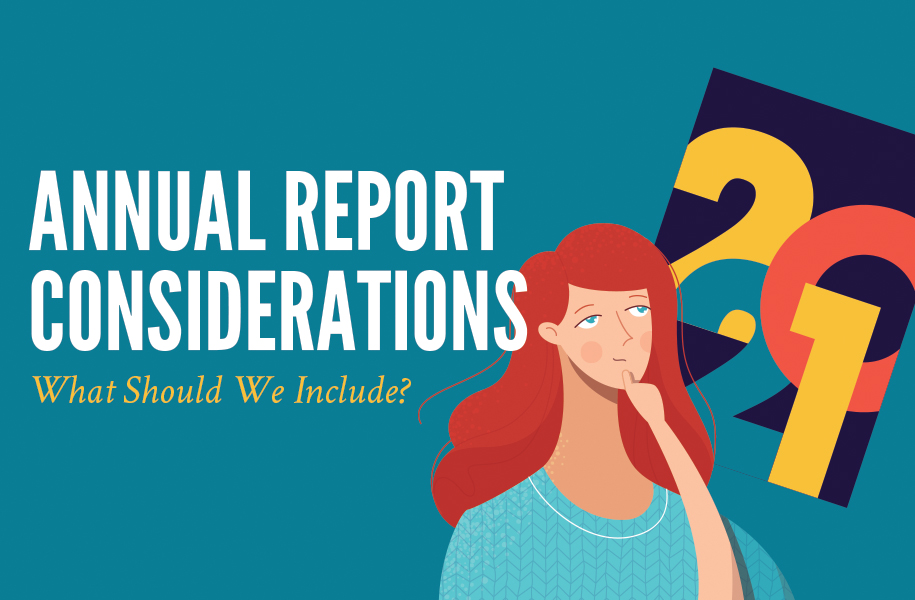Most organizations create some sort of annual report each year, or at least an annual review, to thank donors and let them know how their donations are being used. If it’s that time of year for your nonprofit, here are some questions to ask before you get started.
Who is the report for? For sure, donors and foundations who partnered with or gave to your organization during the year are part of your audience. But think about other segments that might benefit from the report. If you include information about your programs and share highlights from the year, your report can turn into an excellent marketing tool for prospects, partners, and potential donors. So while it’s good to highlight what you’ve done in the past year, consider including your plan or vision for what’s to come in the future, and get others excited to participate.
What format will the report take? In recent years, many organizations have transitioned to paperless reports, which might take the form of PDFs, websites, videos, presentations, or infographics, which can allow for wider reach/dissemination, and lower costs by eliminating the printing fees and postage. But if you are considering using your report as a marketing tool for prospects, consider doing a printed piece as well. Perhaps you print a smaller number of report booklets to use as marketing tools. Or you might design a smaller companion brochure or postcard to go along with your digital report.
What content should we include? No matter what you put in the report, it should be visually compelling, honest, and simple. Keep it easy to read, and concise. These are items you’ll likely want to include:
- Photos and quotes help give the reader a quick visual snapshot of what you do, who you do it for, and the results.
- Stories that highlight real examples of the work your organization does. Real-world examples and testimonials draw the reader in, create an emotional/human connection to your work, and give donors a sense that they’re making a difference through their donations.
- Results. How did your organization perform last year? Who did you serve? What went well? What are you proud of?
- Financials. These aren’t a must, but if you do include them, keep them simple. An overview/summary using clear charts and graphs or simple infographics will be just fine. Make sure category descriptions are clear and understandable to the average reader.
- Donor Names. It doesn’t matter if you list them by type or just as an alphabetical list, but it’s important to thank those who have supported your organization. Make sure all names are spelled correctly (triple check them, and then check them again!).
- Call to Action. In addition to listing out options and levels for monetary donations, how can readers help moving forward? Are there upcoming events that need volunteers, or conferences they can attend, or other ways they can participate and provide support?
How long should it be? Well, that depends. How concisely can you say what you need to say? Based on the format (see #2) and the content you’ll be including (see #3), there’s no one right answer. It should be long enough to include the details that really need saying/showing with some visual space (don’t cram it all onto a single page), but also short enough that it’s not overwhelming for the reader and too expensive to produce. The content should dictate the length.
Take the Next Step
Now that you have an idea of what you’ll need for your report and how you want to share it, get in touch with your graphic designer. She can help you with the nitty gritty details and ensure that your report looks fabulous and gets donors excited, all while keeping you on budget.
